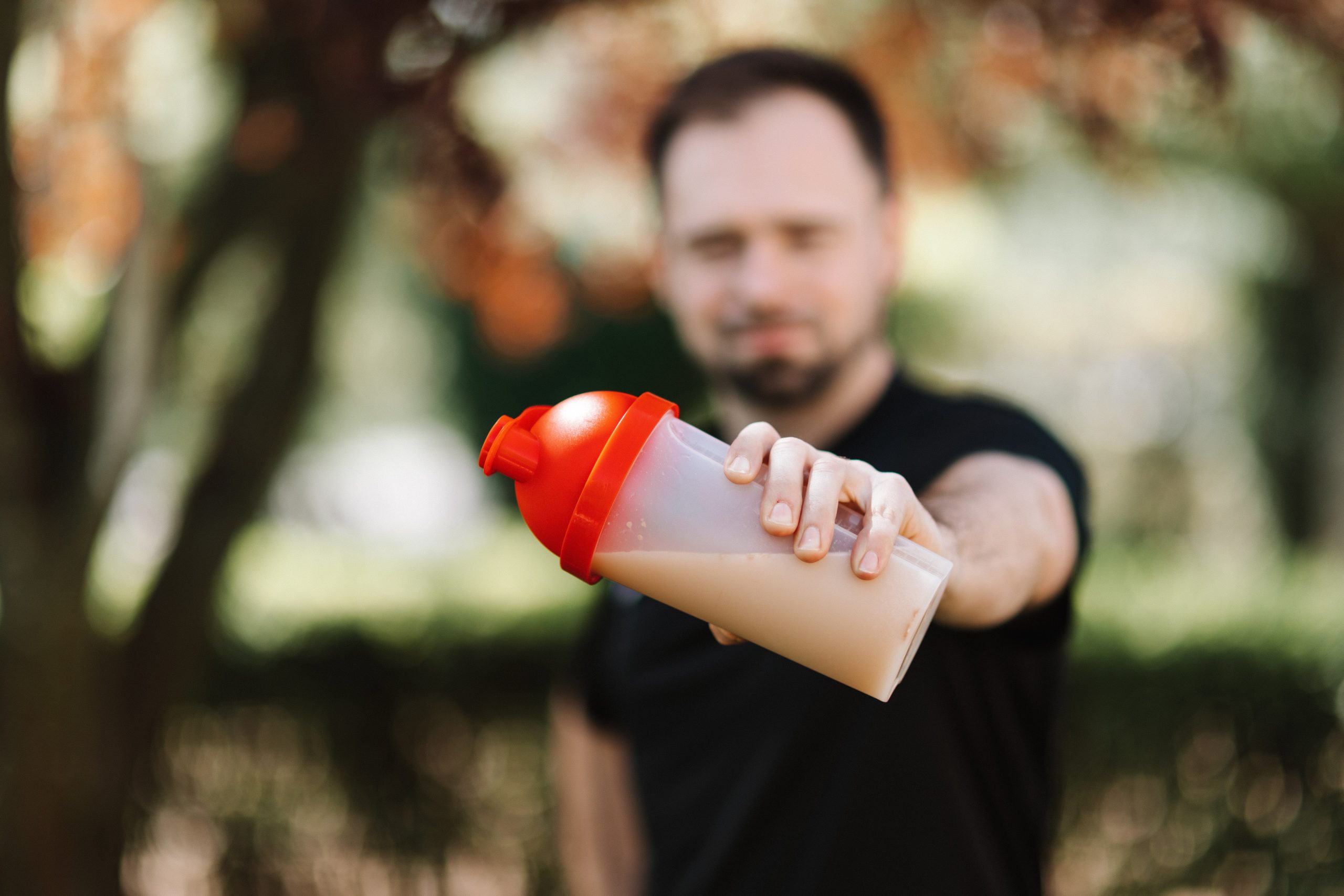Choosing between ISO 100 vs HydroWhey can be puzzling. I’ve personally grappled with the same decision. You’re not alone in wondering about the difference between ISO 100 and HydroWhey. In this article, I’ll share my expertise, addressing common concerns and guiding you toward the best choice for your goals.
ISO 100 vs Hydrowhey
Both ISO 100 and Hydrowhey are renowned in the fitness realm, each offering distinct attributes to support muscle recovery and growth. While ISO 100 emphasizes purity and quick absorption, Hydrowhey shines with its advanced hydrolysis process. Making an informed decision between these two largely depends on individual preferences and specific fitness goals.

Overview of ISO 100
ISO 100 stands out as a top-tier protein powder prized for its exceptional purity. Through rigorous filtration, it eliminates unwanted lactose, carbs, fats, and sugars. Its key ingredient, hydrolyzed whey protein, guarantees swift absorption. Mixability is a breeze, whether in water or milk, and the flavor range doesn’t disappoint. Furthermore, its certification as banned-substance tested solidifies its credibility among fitness enthusiasts.
Overview of Hydrowhey
Hydrowhey is another premium protein choice recognized for its high-quality hydrolyzed whey content. This form undergoes a unique hydrolysis process, optimizing digestion speed and amino acid delivery. Consumers appreciate its smooth texture, making it a favored choice for shakes and post-workout drinks.
Comparing ISO 100 and Hydrowhey
When you’re standing in a protein supplements shop, ISO 100 and Hydrowhey are two front-runners. Both have garnered respect and trust in fitness communities, often touted for their benefits. Yet, understanding their nuances is critical for those keen on maximizing their fitness results.
Similarities
Besides the fact that ISO 100 and Hydrowhey are protein powders, they share some key attributes:
- Quality Source: Both utilize high-quality protein sources to ensure maximum benefit, especially if you know when to take your protein shake.
- Absorption: Known for rapid absorption rates, they’re designed to deliver amino acids to muscles post-exercise promptly.
However, while they share these admirable features, their individual compositions and processes present distinct advantages and differences.

Differences
At a glance, ISO 100 and Hydrowhey may appear alike; delving deeper reveals notable distinctions:
- Composition: ISO 100 is a hydrolyzed whey protein isolate, emphasizing minimal lactose and fats.
- Digestion: Hydrowhey, on the contrary, boasts hydrolyzed whey peptides, aiming for even swifter absorption and digestion.
Though both products serve the purpose of aiding muscle recovery and growth, their different components and features cater to varied consumer needs.
Major Distinguishing Factor
The core distinction between ISO 100 and Hydrowhey is entrenched in their protein makeup and processing:
- Protein Source: While ISO 100 heavily relies on hydrolyzed whey protein isolate, Hydrowhey prominently features hydrolyzed whey peptides.
- Processing: The hydrolyzation process for ISO 100 primarily focuses on removing excess lactose and fats to achieve a purer protein form. In contrast, Hydrowhey’s hydrolyzation prioritizes breaking down larger proteins into smaller peptides for accelerated absorption.
- Amino Acid Profile: Due to their unique sources and processing methods, both offer slightly varied amino acid profiles, which can influence muscle recovery and building efficacy.
- Taste and Texture: Crucial for consistent consumption, the protein source and processing method can influence the taste and solubility. Some users find one more palatable or more accessible to mix than the other.
When to Use ISO 100
ISO 100, with its high protein purity, caters to specific needs:

- Post-Workout Recovery: After intense workouts, muscles require rapid protein uptake. ISO 100’s hydrolyzed whey protein isolate ensures quicker absorption. Studies show that consuming high-quality proteins post-exercise can significantly improve muscle recovery.
- Lactose Sensitivity: Since ISO 100 undergoes a process that removes most lactose, it’s ideal for those with mild lactose intolerance.
- Lean Muscle Goals: For those targeting lean muscle without added fats or carbohydrates, ISO 100’s nearly pure protein formula is advantageous. You just need to determine your daily recommended protein intake.
- Dietary Restrictions: ISO 100 provides around 25 grams of protein per serving, fitting seamlessly into high-protein, low-carb diets.
Given these specifics, ISO 100 emerges as a versatile choice for many fitness enthusiasts.
When to Use Hydrowhey
Hydrowhey, fortified by hydrolyzed whey protein, addresses distinct nutritional requisites:
- Rapid Absorption Requirement: Hydrolyzed proteins in Hydrowhey enable faster digestion. A study suggests that hydrolyzed proteins accelerate nutrient availability, benefiting athletes post-workout.
- Low Caloric Intake: Hydrowhey typically has fewer calories, aligning with those monitoring caloric intake closely.
- Digestive Comfort: Its enzymatically pre-digested nature may be gentler on the stomach, reducing potential digestive discomfort.
- High Amino Acid Profile: With an enriched profile of essential amino acids, Hydrowhey aids in muscle protein synthesis, essential for growth and repair.
If you are prioritizing quick protein assimilation and digestive ease, then Hydrowhey is the choice for you.

Which is Better?
After evaluating both ISO 100 and Hydrowhey, the choice between the two boils down to personal requirements. While ISO 100 offers unmatched purity and caters to lactose sensitivity, Hydrowhey shines in fast absorption and digestive comfort. Analyze your nutritional objectives to select the best fit between these commendable protein options
Related Questions
Is Hydrowhey Better Than Whey Isolate?
Hydrowhey is a hydrolyzed whey protein, allowing faster absorption due to its enzymatically pre-digested nature. Whey isolate, on the other hand, is a pure form of whey with higher protein content and less fat and lactose. If rapid absorption is a priority, Hydrowhey may be preferred. For a higher protein content with minimal additives, whey isolate could be the choice.
What Does ISO 100 Hydrolyzed Mean?
ISO 100 Hydrolyzed refers to a specific protein powder where the primary protein source is hydrolyzed whey protein isolate. “Hydrolyzed” means that the protein has undergone partial enzymatic breakdown, resulting in smaller peptide chains.
Is ISO 100 Hydrolyzed Good for Weight Loss?
ISO 100 Hydrolyzed is one of the best weight loss protein powders, as it provides a high-quality protein source with minimal fats and sugars. Protein can support muscle preservation during a caloric deficit and can promote satiety, potentially reducing overall calorie intake.
Conclusion
Choosing between ISO 100 and Hydrowhey boils down to individual needs and preferences. Both offer high-quality protein with varying digestion rates and profiles. It’s vital to assess one’s goals, be it muscle recovery or weight management, before settling on a choice. Remember, the best protein supplement is the one that aligns with your objectives and dietary requirements.